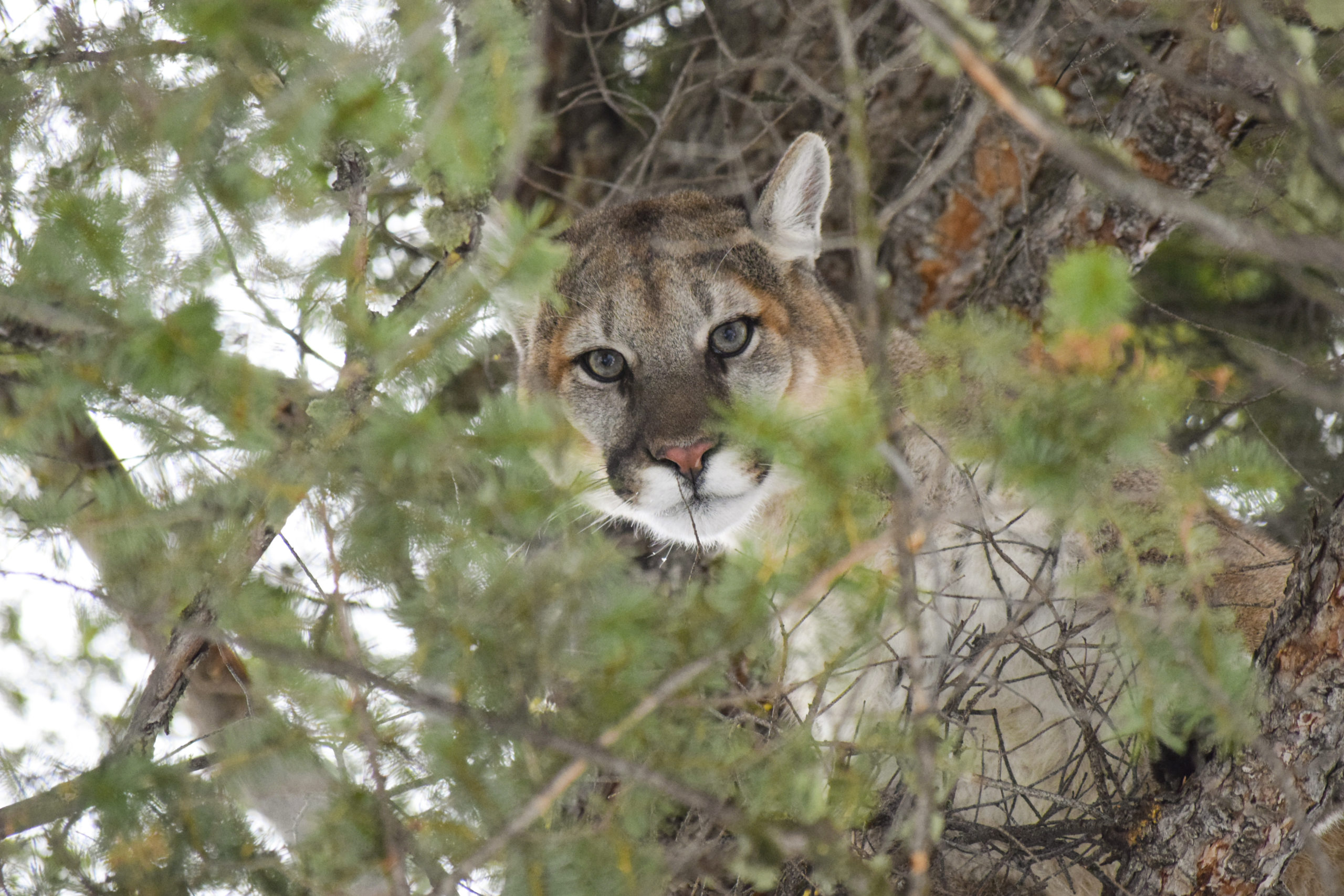Genetic research indicates that the common ancestor of today’s Leopardus, Lynx, Puma, Prionailurus, and Felis lineages migrated across the Bering land bridge into the Americas approximately 8 to 8.5 million years ago.
What we know as a cougar today became recognizable as a distinct species about 400,000 years ago, and inhabited nearly all of the Americas for hundreds of thousands of years, alongside the giant sloth, the mammoth, the dire wolf and the saber-toothed lion.
During the Pleistocene ice ages, conditions appear to have become too cold for cougar populations to survive, and paleontologists believe that at the end of the last ice age, the big cats repopulated North America from a southern refugium. Cougars have inhabited Oklahoma, alongside humans, for more than 40,000 years.
Native people memorialized the cougar in rock carvings, totems, in story and in song. As European settlement expanded in the 1840’s, cougar persecution and riding the landscape of dangerous wildlife became more common.
European Settlement
As European settlers began to settle what would become the United States in earnest, they established farms, ranches, and towns, complete with various livestock. With the pigs, sheep, horses, cattle, and goats came conflict with the native wildlife. In 1895, the U. S. Department of Agriculture established Wildlife Services, whose mandate was rodent control and predator eradication. The idea that predators were vermin who should be removed from the landscape was echoed by bounty programs supported by many states. Mountain lions, wolves, bears, and bobcats were poisoned, shot, trapped, or otherwise killed by the thousands.
Fur Trade
In addition to heavy mountain lion persecution in the name of livestock protection, expanding markets for fur further reduced mountain lion numbers. In the 1600s, the fur trade in the Americas became globalized and hides obtained from Native Americans were shipped to Europe where they were in high demand. Europeans imported goods useful to Indians and were able to trade for the furs in exchange. Starting in 1602, the Company of New France was given a royal charter and exclusive trading rights from Florida to the Arctic.
Mountain Lion Declines
By the 1850s, these trapping efforts made mountain lions increasingly rare in the eastern two thirds of the continent. Mountain lions were functionally extinct in the Midwest by 1860, the mid-Atlantic states by 1882, in the south coastal states by 1886, in central Appalachia by 1900, and in New England by 1906. Unfortunately, mountain lions in Oklahoma were subject to the same forces and did not fare any better. Though there have been various sightings throughout the years, there hasn’t been a resident population of mountain lions in Oklahoma since the early 1900s.
Recent History
In 1957 the Oklahoma Department of Wildlife Conservation listed the mountain lion as a game species with a closed season. The state can’t make any definitive comments about the potential population as they haven’t yet conducted research on the matter.
Though cougars have been functionally extinct for over a century, the USFWS continues to receive reports of sightings. They have not been able to confirm any of these cats were the eastern cougar subspecies, rather they believe these individuals have been released pets or lions dispersing from the western population.
With the appropriate protections to the species and their habitat, perhaps we could recover our lost mountain lions, and they could once again wander the land in which they formerly lived.



